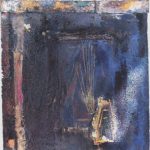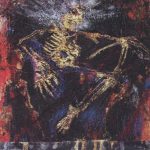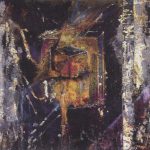Dona Geib: Into the Tunnel
Notice: Pod Template PHP code has been deprecated, please use WP Templates instead of embedding PHP. has been deprecated since Pods version 2.3 with no alternative available. in /data/siggraph/websites/history/wp-content/plugins/pods/includes/general.php on line 518
Artist(s):
Title:
- Into the Tunnel
Exhibition:
- SIGGRAPH 2003: CG03: Computer Graphics 2003
-
More artworks from SIGGRAPH 2003:
Notice: Array to string conversion in /data/siggraph/websites/history/wp-content/plugins/siggraph-archive-plugin/src/next_previous/source.php on line 345

Notice: Array to string conversion in /data/siggraph/websites/history/wp-content/plugins/siggraph-archive-plugin/src/next_previous/source.php on line 345

Creation Year:
- 2003
Size:
- 18 in x 18 in
Category:
Artist Statement:
One of the delights (rather, the seduction) of working as an artist in the 21st century is using digital technologies (that continue to become more sophisticated). I think (no, I know), that I am participating in an authentic revolution. Before the revolution, I received my Master of Arts in experimental printmaking, specializing in 30 intaglio prints, photography, and very early computer graphics. Since 1983, I have been working with the computer and creating digital art.
The basis of my work is in using combinations and permutations of “throw-away” corrugated cardboard boxes and their inner divider elements. Now, however, instead of drawing the image on a zinc plate, I am utilizing electronic techniques to scan an image (my own sculptures, photographs, or prints) with a digital video recorder or digital camera.
Using digital images seems to be a natural evolution of the method that printmakers have been utilizing for centuries: layering. I take my intaglio prints, ghost prints, and monoprints and transform them by adding or compositing portions of a new digital image to them. These new digital methods are exciting additions to the print vocabulary. I can print on a canvas, hand-made paper, transparent media, silk, metal, and then I can transfer images through a heat method (on and on and on). I end up with paintings on canvas or handmade paper using large-format printers. To these new creations, I add handwork of encaustic, gold leaf, and metal.
I admit that there seems to be a little cognitive dissonance (and I like that dissonance) in my use of high-tech software and hardware to depict urban detritus (the “throw-aways,” the “quickly disposable,” and the “tacky”). In my hands, the digitally assisted and reworked images of corrugated cardboard boxes, dividers, and crates become an illusion to another world or universe. I am inventing a new world, new landmarks to point to the familiar but unacknowledged. I give visual clues of a dilapidated apartment house, the slums along the border, or the foretelling of a “blade runner” future for Los Angeles in the 22nd century. I depict alternative universes. Creation of these new universes is a symbol of my search for time without end or perhaps life to be continued … somewhere else.










